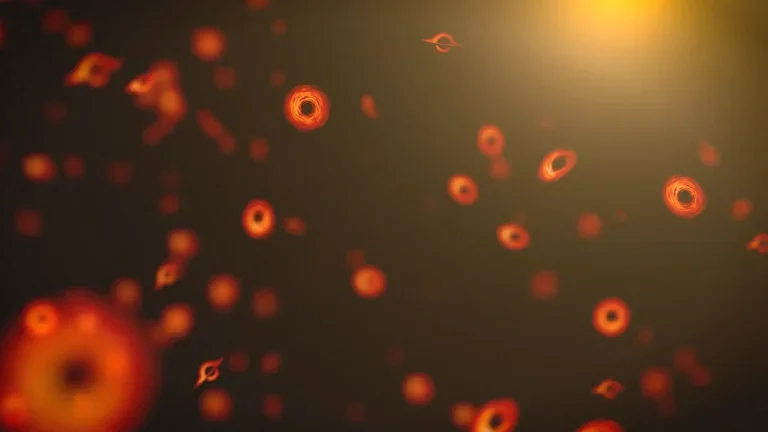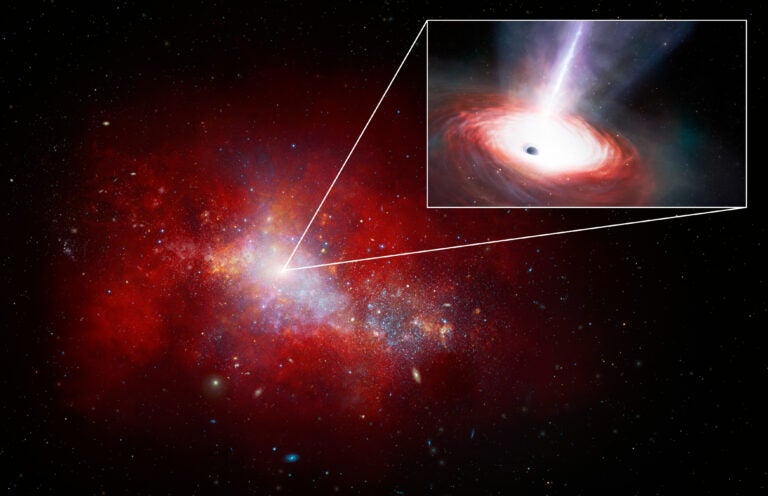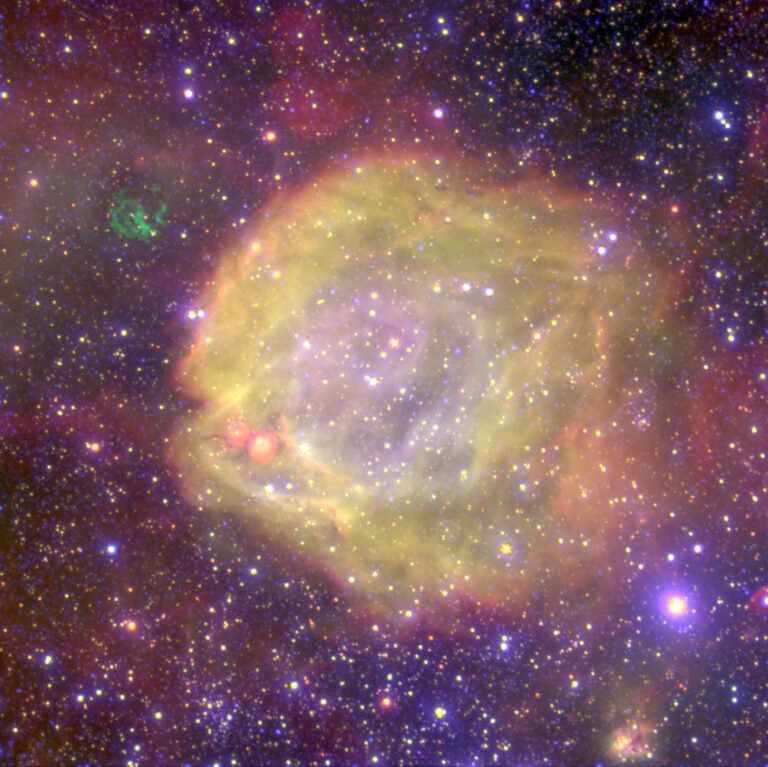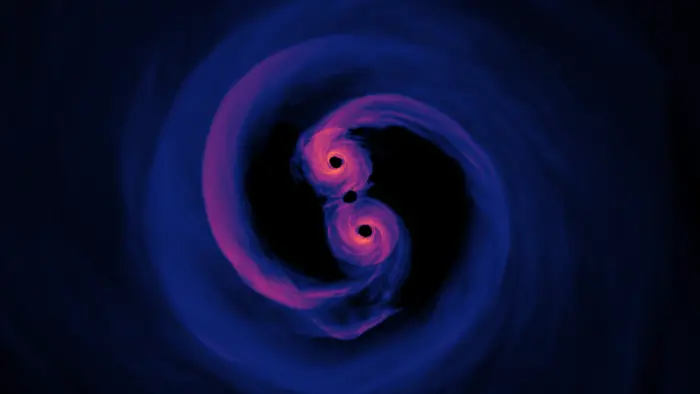
“The great hum” in the October 2023 issue states that astronomers weren’t sure that supermassive black holes in binary systems could close in on each other. I would assume that objects with such massive gravity would absolutely attract each other over time and eventually merge. What am I missing?
Bill Ziegler
West Chicago, Illinois
All massive galaxies are believed to host supermassive black holes millions or billions of times the mass of the Sun. When galaxies merge — which we know they do, and frequently — it seems a foregone conclusion that their supermassive black holes (SMBHs) should also merge. After all, we have seen smaller stellar-mass black holes merge. But the physics involved in the way SMBHs ultimately approach each other before merging gets a little tricky. This conundrum is often called the final parsec problem, and it’s plagued astrophysicists since the 1980s.
Let’s start with two merging galaxies. Each has an SMBH. As the galaxies entwine, they eventually form a single galaxy made up of the combined material — including stars, gas, and black holes — of the two progenitors. As things settle, the two SMBHs, once in the middle of their respective galaxies, begin to work their way toward the center of the final galaxy as well. They do so through a process called dynamical friction, also called gravitational drag. As the black holes encounter nearby stars and gas, sometimes instead of falling into the SMBH, the star or gas cloud instead gets a gravitational boost. Essentially, they are slingshot away from the SMBH, just like a spacecraft that uses planetary gravitational assists to move through the solar system. Giving a star or gas some energy robs the SMBH of a tiny bit of its own, reducing its momentum.
Eventually, dynamical friction brings both SMBHs to the galactic center and they begin to orbit each other (point A in the diagram below). They continue to lose momentum through dynamical friction for several billion years, until they close to a distance about 1 parsec (3.26 light-years) apart.
Then the process stalls out, bringing us to the “final parsec” part of the problem. To reach this point, the black holes will have cleared the area of stars and gas, leaving nothing for further interactions (point B). It would take the black holes some 10 billion additional years, essentially the age of the universe, for enough stars and gas to trickle back into the area, refill it, and create enough drag though interactions to allow the black holes to cross the final parsec and merge.
What about gravitational waves? These ripples in space-time carry energy away from orbiting objects so that they can merge. But for gravitational waves to carry away enough energy for SMBHs to merge, those SMBHs must be at most 0.01 pc apart. So, you see the problem — we understand how to get SMBHs 1 pc apart, but no closer.
In June 2023, the NANOGrav team of radio astronomers announced they had detected a background hum of low-frequency gravitational waves of the kind we think would be generated by merging SMBHs. This suggests that there is a way to bring SMBHs close enough to lose energy through gravitational waves and merge (point C). Astronomers have several ideas about how the universe might overcome the final parsec problem, notably by throwing a third SMBH into the mix (which then gets kicked out of the system, depleting the two remaining SMBHs of significant energy). Or perhaps the calculations behind the approach of SMBHs are oversimplified and other factors need to be considered.
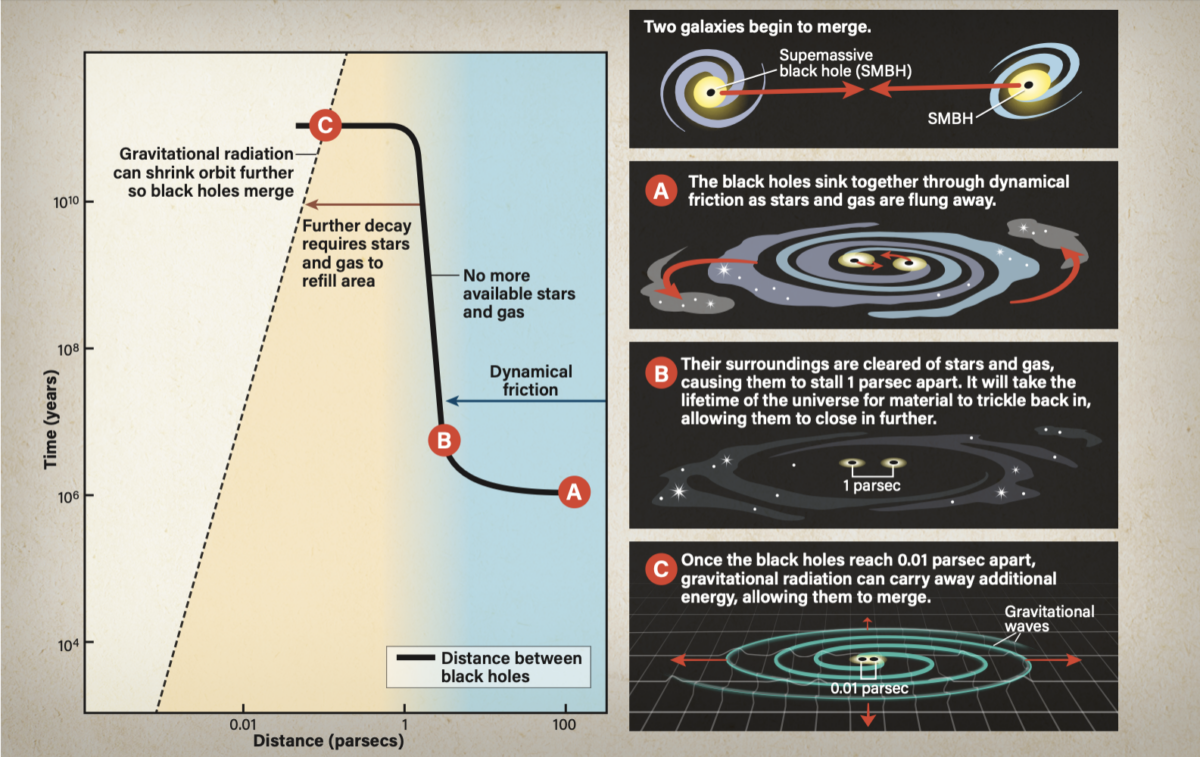
The recently detected background hum cannot yet be separated into its components well enough to finally say for sure whether we’re seeing merging SMBHs. But astronomers strongly suspect this is the case and now have a great jumping-off point for finding that final piece of solid evidence that will show us the irrefutable merger of a pair of SMBHs.
Alison Klesman
Senior Editor






